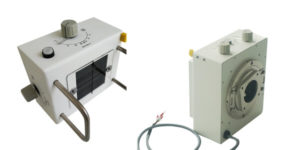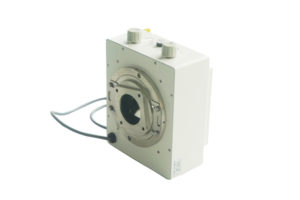Home›Blog ›What’s the structure of x ray collimator?
What’s the structure of x ray collimator?
Let me explain the structure of the x ray collimator today.

1. Mirror fixed structure
The mirror is an important component in the collimation radiology. Its correct position directly affects whether the simulated light field is correct.
The mirror is a very thin lens, usually made of plastic, with a vacuum coating on the surface to act as a mirror. The mirror requires a flat surface with a reflectivity of 80% to 90%, and an X–ray absorption rate of less than 0.5 to 1 mm of aluminum equivalent.

2. Point source structure
The illumination field indicates that the illuminated area is accurate only when the beam limiter is installed in accordance with the required focus to the mounting plane distance.
On the collimation radiology, the switch of the photographic control indicator is turned on and off. Most of the switches are now automatically turned off, and automatically turn off after reaching the predetermined time. This reduces operating steps, avoids forgetting, and extends lamp life. Common automatic light-off devices are available in both mechanical and electronic versions.

The mechanical automatic closing device has two types of knob type and button type. The length of time the light is on depends on the degree to which the knob is turned or the button is pressed. Generally up to 1 minute. The electronic automatic devices use an electronic time limiter, and after the limited time is set, the button is activated to automatically turn off the light until the predetermined time.
Author:Alina
X Ray Collimator
Blog
contact us
TEL:+86 18953679166
E-mail:service@newheek.com
Company:Weifang Newheek Electronic Tech Co., Ltd.
ADD:E Building of Future Star Scientific Innovation Industrial Zone of No.957 Wolong East Street, Yulong Community, Xincheng Sub-District Office, Weifang Hi-tech Zone, Shandong Province, China

